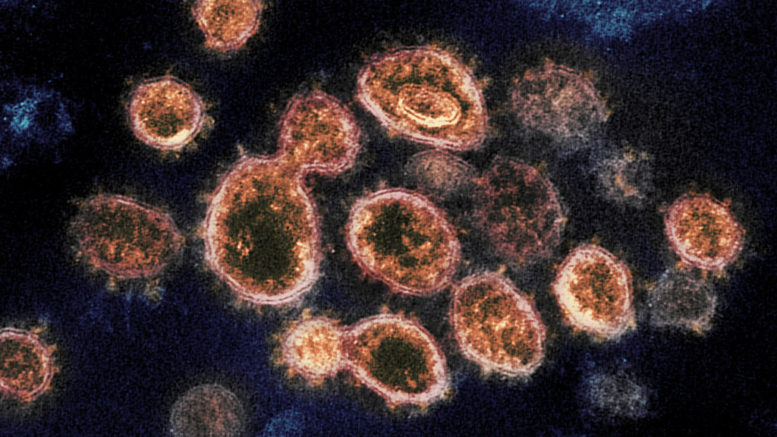Justin Kipness is a senior planning to study biology at Brown University in the fall. Each week, he will trace the Coronavirus pandemic from its origin in Wuhan, China all the way to Stamford, CT. To read Part 1, click here.
Yunnan Province, China (24.5 N, 101.3 E)
Welcome to Yunnan Province, China. It was the fall of 2013 and in the distance one could see rice fields and snow capped mountains. However, this was no vacation; this was the scene of an epidemiological study. A team of Chinese scientists slipped on disposable outerwear – think plastic bag meets Star Trek uniform. They were then equipped with N95 masks, tear resistant gloves, and safety goggles, according to journals.plos.org. Then they entered a cave.
The cave was about 75 ℉, but likely felt hotter with the layered clothing coupled with 90 percent humidity. One of the scientists trekking through the cave was Professor Zhengli Shi, a graduate of Wuhan University and Wuhan Institute of Virology. She had been studying in Wuhan since 1987 (besides four years at Montpellier University II in France). Since 2004, her Emerging Viruses Group had been researching how diseases can be transmitted from bats to humans, according to ws-virology.org. She even predicted that bats would again be the source of another zoonotic disease outbreak. She was not only correct in her prediction, but the outcome of this new pandemic ironically hit so close to her home.
The story from the cave comes full circle. Many scientists have started to believe that the virus that causes coronavirus disease 2019 (COVID-19) may have originated from a cave like this one. Although this study was initially intended to learn how severe acute respiratory syndrome (SARS) emerged from animals, the scientists discovered something alarming – a few of the coronaviruses in the bats in the cave seemed to have the potential to infect humans. The group of scientists warned of the necessity to prepare for the emergence of new SARS-like diseases in their peer reviewed paper journals.plos.org, but, for the most part, the world did not listen.
The scientists crawled into rocky crevices to collect specimens from bats. The cave was full of a wide range of species of Rhinolophus, or horseshoe bats, named for their nose-like structure that resembles an upside down horseshoe crab, according to bio.bris.ac.uk and britannica.com. Colonies of these mouse-sized bats clung to the top of the cave. Throughout this five year study, the group of Chinese researchers would collect bat guano (or bat feces), screen for coronaviruses, and perform genetic and molecular testing on these specimens.
There has been a lot of confusion over what coronaviruses are. A coronavirus is a virus in the family Coronaviridae, classified for being an RNA virus (the genetic material of the virus – viruses can either contain DNA or RNA), with a spherical shell and spike proteins sticking out of the shell, according to ncbi.nlm.nih.gov. Just like how dogs are classified in the Canidae family for having a strong jaw, four legs, and a tail, viruses are also grouped based on their shared characteristics. The novel coronavirus simply meant that the virus in Wuhan contained the characteristics of a virus in the coronavirus family but had not been identified before. The actual name of the 2019 coronavirus is severe acute respiratory syndrome coronavirus 2 (SARS-CoV-2). The disease caused by this virus is referred to as COVID-19.
Back at the lab, one of the first things the scientists did with the bat samples was perform genetic testing to identify viruses that would fall in the coronavirus family. This was important because these viruses would either give them an insight into the emergence of the original SARS or give clues about the next possible spillover of a new coronavirus into a human population: perhaps in the small village about a mile away, maybe in Kunming City, the capital of Yunnan Province about 37 miles from the cave, or even on the other side of China due to their extensive animal trade. Could a virus from a cave in this area travel over 1,000 miles to Wuhan?
The genetic testing revealed a striking fact. The coronaviruses found in this cave had 93.2 percent to 96 percent sequence identity with the 2003 human SARS coronavirus, according to journals.plos.org. This similarity between SARS and the bat coronaviruses in the cave suggested that SARS may have emerged from horseshoe bats, specifically from bats in caves in this region. The close sequence identity also suggested and foreshadowed the possibility that new coronaviruses could jump species barriers from bats to humans.
Genetic sequencing only revealed the beginning of the biological story that lined the crevices of the cave. The true test to discover viruses that could possibly cause a spillover was in molecular testing.
So far, we have traveled through the markets and hospitals of Wuhan and the bat caves of Yunnan. Now we travel to the microscopic level to learn about bat coronaviruses – specifically, to learn what happens at the molecular level that enables certain bat viruses to infect human cells and create a pandemic. Using state of the art technology, we can observe what the virus looks like and how it may behave.
Coronavirus at the microscopic level looks like a ball with a bunch of tiny clubs stuck in it. These club-like structures attached to the virus are called spike proteins. These spike proteins are the key to understanding how viruses can jump species barriers. They can determine if a virus is unable to infect a person at all or even create a pandemic that has closed schools, caused a state of emergency in the United States, and left the global economy in turmoil.
The reason these spike proteins determine a virus’ ability to infect people lies in something called cell binding. Essentially, all cells in our body have receptors, which are proteins that mediate the entry of particles. If an external protein is able to fit into the receptor, it allows the particle to enter the cell, like a lock and key, where the cell receptor is a lock and a viral protein is the key. For coronaviruses, the spike protein acts as a key, and if the spike protein is able to mutate in a bat coronavirus, this mutation can allow a new virus to infect humans.
Although the genetic code of the bat coronaviruses were similar to SARS, the area they differed the most was in a location that plays a role in how the virus enters bodies. The element that differed the most is called the S gene, which codes for the spike protein. This difference in the spike protein is logical because bat coronaviruses need to have their spike protein act as a key for bat cell receptors, while human viruses need to have a spike protein that acts as a key for human cells.

From analyzing the specimens, an uncomfortable discovery was uncovered in the bat guano-laden floor: a few viruses did have substantial similarities to the human SARS spike protein. This indicated that coronaviruses may be lurking in bats that have the potential to infect humans. This hypothesis was tested later in another molecular experiment.
Remember the lock and key analogy. To test if these new viruses had the potential to open the lock that guards human cells, the scientists set up an experiment. Human cells contain many receptors. In previous studies, scientists identified the receptor (the lock) that allowed SARS to enter human cells. The receptor is called Angiotensin 1 Converting Enzyme 2 (ACE2), according to journals.plos.org. Essentially, if the viruses in the cave that had similar spike proteins (the keys) to SARS were able to enter cells containing ACE2 transporting receptors, it would prove that these viruses had the potential to infect humans. The scientists used a special type of cell in their lab that expressed ACE2. They infected these cells with the bat coronaviruses. A few of the viruses did replicate in these cells, indicating that their spike protein was able to interact with ACE2. The key fit into the lock and showed the potential to infect humans. The scientists said in the 2017 publication that their work “…highlights the necessity of preparedness for future emergence of SARS-like diseases.”
The warnings from this group of scientists and many others were unfortunately spot on.





